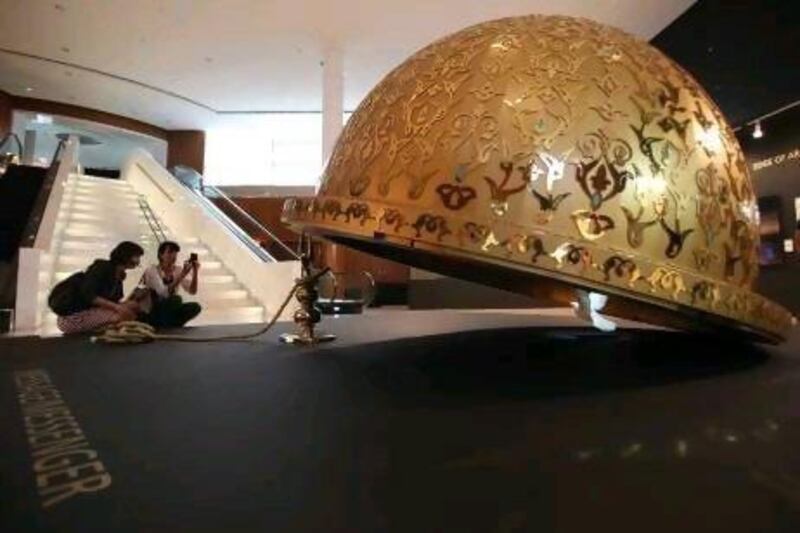Sales of paintings, sculptures and other works set records in the Middle East last year as the region's art market became more firmly established.
At Christie's Middle East, which is based in Dubai, 38 per cent of the works of art sold through the auction house last year topped their highest pre-sale estimates, while 85 world auction records were set as interest in contemporary Middle Eastern art continued to grow.
One wood-and-copper piece, called Message/Messenger, sold for US$842,500 (Dh3.1 million) - 10 times its original estimate.
"We had probably one of the best years for Christie's, because we're seeing not only investors coming into the market but collectors investing more into their collection," said Isabelle de la Bruyère, the director of Christie's Middle East.
Overall, the company has sold about $220m worth of art since it launched in Dubai in 2006.
"The market is healthy and good for buyers, because they can see this is a market that is sustainable and attracting more and more interest," said Ms de la Bruyère.
Five galleries have recently opened in Dubai, in time for Art Week, which officially began in the Emirates yesterday and runs until next Sunday.
The event is expected to attract even more buyers to the region, and experts say that more purchasers are coming not only from the UAE and Saudi Arabia but also from other emerging markets.
More collectors from Pakistan are basing themselves in the Emirates, as are buyers from South Asia, said Antonia Carver, the fair director for Art Dubai, a festival featuring 75 galleries that begins on Wednesday at the Madinat Jumeirah hotel.
"The market is becoming more and more diversified, and Dubai is becoming more and more a global hub for the arts," said Ms Carver.
Globally, the art market has been buffered and, in fact, bolstered thanks in large part to a surge of buyers from China. Buyers from China accounted for 41.4 per cent of last year's global art auction revenue of $11.5 billion.
The total art market now represents about $90bn, according to data released last month by Artprice, a French company that monitors sales in the industry.
"The art market has ridden the global financial crisis … in a way that people had not predicted necessarily," said Ms Carver. "Auctions have held up, and particularly in the Gulf."
Next month in Dubai, Christie's plans to hold a sale of modern and contemporary Arab, Iranian and Turkish art.
The company is also continuing with a programme launched last year to appeal to younger, less affluent investors who are interested in starting art collections. Prices for works in this tier tend to range from $2,000 to $3,000.
"We realise our auctions are intimidating and people do have a tendency to think you need to be a millionaire to come to Christie's," said Ms de la Bruyère. "But that is not actually the case.
"Art is not for the elite. Art is for absolutely everybody."
Through the Art Dubai fair, Ms Carver aims to increase exposure and sales for local galleries by bringing museum directors, curators, boards of patrons and major donors to the Emirates. This year, more than 70 groups are set to attend Art Dubai, including some from the British Museum, Musée d'Art Moderne de la Ville de Paris and the Asia Pacific Contemporary Society of Australia.





